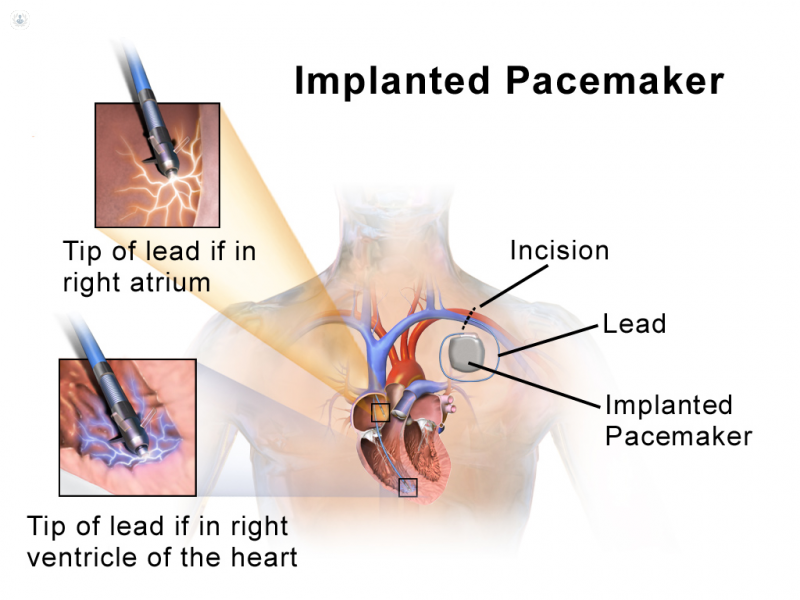

What is a pacemaker?
A pacemaker is a small electric device which generates electrical impulses to regulate your heart rhythm. It is generally fitted in the chest but can sometimes be fitted in the abdomen. About 25,000 people are fitted with a pacemaker each year in the UK.

Most people will be fitted with a traditional pacemaker, of which there are three types, depending on how many wires it has:
- a single-chamber pacemaker has just one wire, connected to the upper or lower heart chamber on the right side
- a dual-chamber pacemaker has two wires connected to both heart chambers on the right side
- a biventricular pacemaker has three wires, two connected to the chambers on the right side, and one connected to the left ventricle
Some people might be fitted with a special type of pacemaker designed to coordinate the pumping action of the different chambers of the heart. In some cases, a defibrillator is attached. The use of this type of pacemaker is known as cardiac resynchronisation therapy, and it is recommended in people who have heard failure because of their left ventricle.
Who might need a pacemaker?
A pacemaker is a popular device used to treat a variety of heart problems. You might need a pacemaker if:
- you have an irregular heartbeat (atrial fibrillation)
- you have a slower heartbeat than normal due to heart block or heart failure
- your heart is beating too fast (tachycardia) and you cannot control it with medication
If you’ve had a heart attack in the past and your doctor thinks you have a high risk of having another in the future, they might recommend a similar device to a pacemaker called an implantable cardioverter defibrillator (ICD).
What does fitting a pacemaker involve?
Pacemaker surgery is a safe operation generally performed under local anaesthetic, taking about 45 minutes to perform. You can usually go home a few hours after the surgery is complete. The battery in the pacemaker can last for about 10 years, so you’re unlikely to have to get it replaced any time soon.
After your pacemaker has been fitted, you’ll be advised on how to use it, and in particular, what to do to avoid electrical or magnetic devices interfering with the electric signals your pace produces. It’s important to let your car insurance company know that you have a pacemaker, as well as the DVLA.
For more information on pacemaker surgery, click here.
